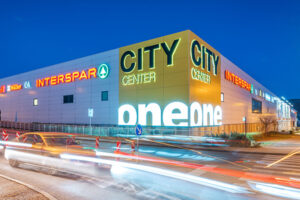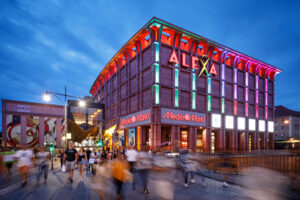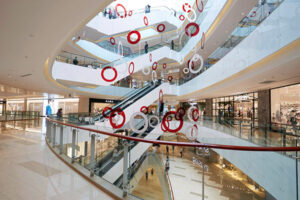By Sebastian Guth
At industry conferences in recent years I listened to various speakers talking about “The Future of Retail”. Some of them implemented ideas that started an exciting thought process. But they also tend to almost seamlessly convey the idea, that there is a “simple” formula to make a place future proof.
I then ask myself: What do they mean by “the place”? In my view there is no such thing as “the place” anymore. The more competitive and complex our market gets, the more we have to concentrate and think deeply about the individual asset and its challenges, problems, and potentials. And maybe we should be more careful with answers that we found elsewhere and aim for the right questions first.
The second thing I wonder: How is it possible that the future seems so predictable sometimes in our industry? And what is future proof? Isn’t it in the nature of innovation that it is a highly evolutionary process? At first the location, its architecture and of course its ingredients position a place–whether it is retail, office, leisure, living, art, mixed used or anything else–or perhaps something new. But positioning doesn’t stop there–it has a very dynamic component to it.
I believe shopping centers (to use the “old traditional word” just once), as much as they sometimes want to be trendsetters, are much more platforms for local as well as global trends and trendsetters. That means we need to be platform engineers in the most positive creative way possible and combine many different systems that interact and influence each other.
Therefore, we should be open to players and opportunities outside of our industry and in our catchment area. We should connect and try out new collaborations. We should not be haunted by digitalization and rather than think hard what makes our projects special. Led by the needs and surroundings of the individual place. It’s not about digital strategies, but about the right strategies in a digital world.
Ideally, we can also test tools that might attract new partners, not only in secure lab environments. We should hope for brave owners that let us all learn from those experiences, as it is no more a result that will be achieved by individuals and rather by different disciplines working closely together.
How do we attract new brands for us that don’t even know they are interested yet or start-ups that do not even know they have started yet? Innovation does not come easy. It is a hard and sometimes tiring process, as creativity and good ideas do not fall from the sky. New opportunities arrive by bending, breaking and connecting existing ones over and over again. But as much as it is sometimes a painful process it surely is a very powerful one. Therefore, let’s create the future a bit more instead of just trying to predict it.
Let’s be open, interested, and inspired by new things–who knows, we might host them on our platforms someday. On our way there, we might even create completely new uses to attract people, because we form individual places with our ideas, but the places do the same with us. That is why I believe “making” is so important for place.






